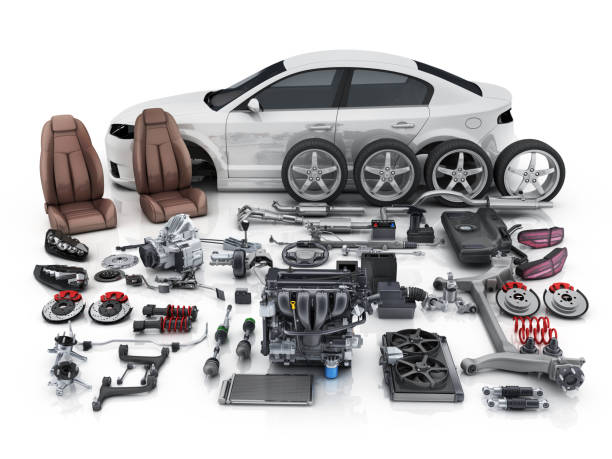What Are OEM Parts?
OEM parts are designed by car manufacturers and are the same as the parts that came with the vehicle from the factory. They are built to the same standards as the parts on newer vehicles and can only be sourced from manufacturers or their dealerships since they are designed by the manufacturers for their specific vehicles.
Aftermarket vs Manufacturer Car Parts
Here is a comparison between aftermarket and manufacturer car parts to help you make an informed decision when shopping for parts at any given time:
Price
Aftermarket parts are generally less expensive than OEM parts, although the price varies by brand. Regardless of the brand, using aftermarket parts will typically cost less than OEM parts. According to the Property Casualty Insurers Association of America, OEM parts cost about 60% more than aftermarket car parts. This is because OEM parts are designed for specific make and models, which means they are designed for one type of car, and manufacturers charge more per unit to make a profit. Additionally, those sourced from authorized dealerships include dealership markups. Alternative parts, on the other hand, are designed to fit several cars across different brands, which enables them to charge less than OEM parts.
Quality
OEM parts offer greater assurance of quality than aftermarket parts because they are the same as the parts on new cars and offer the same level of performance. Aftermarket parts, however, vary greatly in terms of quality, so there is a higher level of uncertainty concerning the quality of aftermarket parts. While some aftermarket parts are of lower quality due to the use of lower-quality materials, others offer equal or greater quality than OEM parts. This is because aftermarket manufacturers reverse engineer OEM parts, allowing them to identify their strengths and weaknesses.
Availability
Aftermarket parts are more readily available than OEM parts and can be sourced from any auto shop, gas station, or mechanic shop. On the other hand, OEM parts can only be sourced from original manufacturers or their authorized dealerships, which limits the options from which parts can be sourced. This means that it may take longer to service a vehicle when there is a shortage of parts, as they will have to be ordered.
Choice and Variety
There is a wide range of aftermarket brands available, with some specializing in a small range of parts, and others manufacturing almost every part. OEM parts do not offer variety since they are made by specific manufacturers for specific vehicles. Aftermarket parts, however, can be confusing to choose from due to their greater variety. A single part may come in different variations, which can be overwhelming, especially if you are not familiar with the brands.
OEM parts on the other hand are easier to choose from since only one type of part is built for a particular car. The parts also have unique numbers so it is easier to find a part just by having the part number.
Warranty
Most Original Equipment Manufacturer (OEM) parts come with warranties, meaning the manufacturer will cover the cost of fixing or replacing a part if you meet the qualifications. In addition, some manufacturers offer incentives such as free or reduced labor when you choose to have your car serviced at their dealership.
In contrast, aftermarket parts typically do not come with warranties or incentives, and you will be responsible for the entire cost of fixing or replacing a part.
When Should OEM Parts Be Used?
It is recommended to use OEM parts for vehicles involved in a collision or accident. Aftermarket parts may not fit properly on these vehicles, especially if there has been damage to the body panels. Using aftermarket parts in such cases can also lower a vehicle’s book value and potentially void the warranty of a leased vehicle. In addition, it can result in loss of part or all of your security deposit for a leased vehicle.
When Should Aftermarket Parts Be Used?
Aftermarket parts are a good option if you are familiar with the brands and quality, or have the time to research them. They are also recommended if you are looking to save on cost, although it is important to keep in mind that quality can vary greatly. If you are not familiar with aftermarket brands, then using OEM parts may be a better choice.
Summary
The choice between aftermarket and OEM car parts is ultimately a matter of personal preference. Aftermarket parts are less expensive, more readily available, and offer a wider range of options. However, the quality of aftermarket parts can be inconsistent. On the other hand, OEM parts offer greater quality assurance and come with warranties, but they come at a higher cost.
